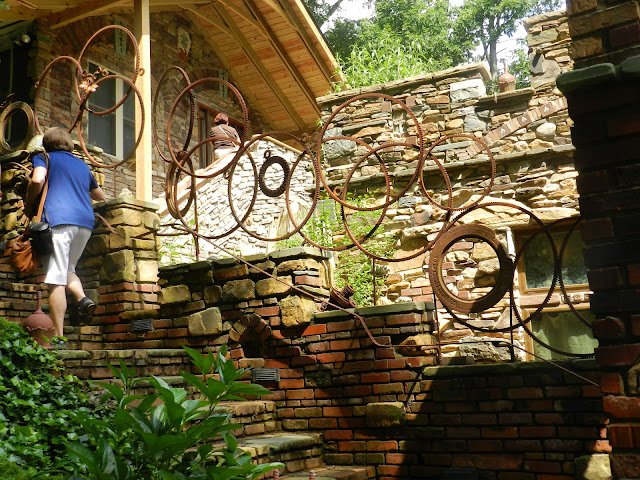I am always happy to see the Susans return, even if they are a little early this year. These Rudbeckia hirta don't need any sunscreen in the blistering sun.
And I'm happy that the Butterfly Weed, Asclepias Tuberosa, has taken a liking to its spot in the roadside garden. Since the butterflies and all kinds of insects love this plant, I don't even mind that it's spreading into gaillardia territory.
But most of all what makes me smile this time of year is my favorite flower of all,
the native Purple Coneflower.
Of course, purple coneflowers aren't really purple--and these days you can find them in shades of yellow, orange, or red in addition to the common pink. Above is 'White Swan,' which is thriving in its second year in the Arbor Bed.
Hybridizers love to play with Echinaceas and have come up with all kinds of cultivars with tantalizing names like 'Hot Papaya' or 'Milkshake.' Some are doubles with pronounced pompon centers, while others have flared petals like this 'Big Sky Sundown' in my lily bed.
Purists, though, may prefer the original natives, like this Echinacea Tennesseensis growing in hostess Gail's garden. This species grows only in a small area in Tennessee, but it is similar in appearance to the native Echinacea Pallida, which was common in the original prairie of my area. (And yes, dear Songbird, these plants do grow wild here, though not as common as they once were. More often, they are part of a wildflower seed mix sown along roadsides today.)
But my favorite of all is the common Echinacea Purpurea, which is anything but ordinary. It's a favorite of the native bumbles, who apparently are on the decline, though they still seem to be plentiful in my garden.
Other bees as well, including this one I can't identify, find the coneflower irresistable.
And have I mentioned it's a butterfly magnet as well? The first Monarch I've seen in awhile appeared yesterday, flitting from one bloom to another.
Coneflowers make the perfect resting spot for other species, including this Red Admiral.
When their bloom time is over, coneflowers keep on giving--the seedheads are a favorite of the birds, especially the finches. With temperatures predicted to reach 100 tomorrow, I may just have to stare at this photo from last December for awhile to remind me it won't always be this hot:)
Echinaceas grow in wild abandon in my sidewalk garden, my butterfly garden, and the roadside garden. While gardening trends come and go, there will always be a place in my garden for this perfect native.
Thanks to our hostess Gail at Clay and Limestone for sponsoring this monthly celebration of wildflowers. Stay cool, everyone!




















































